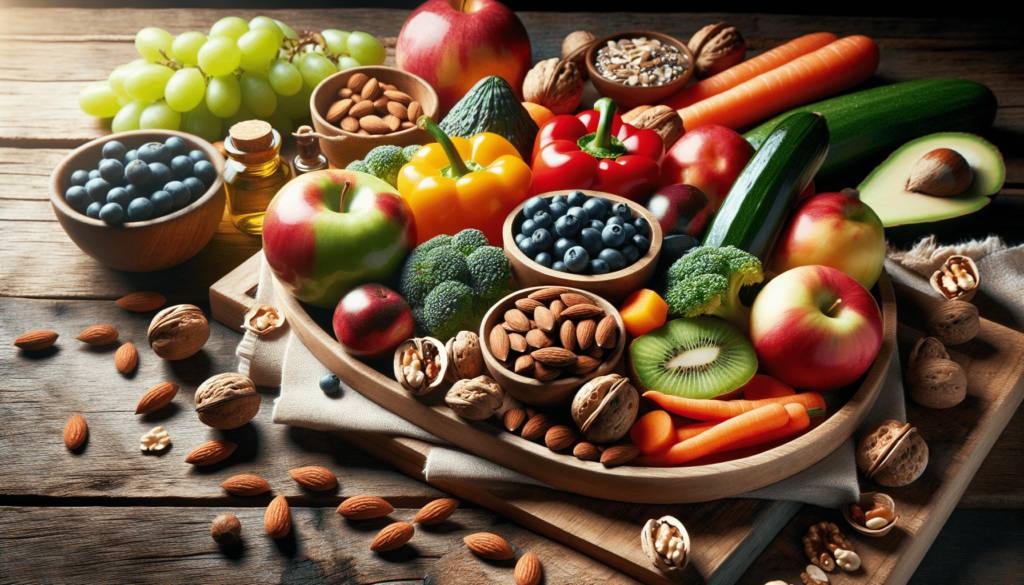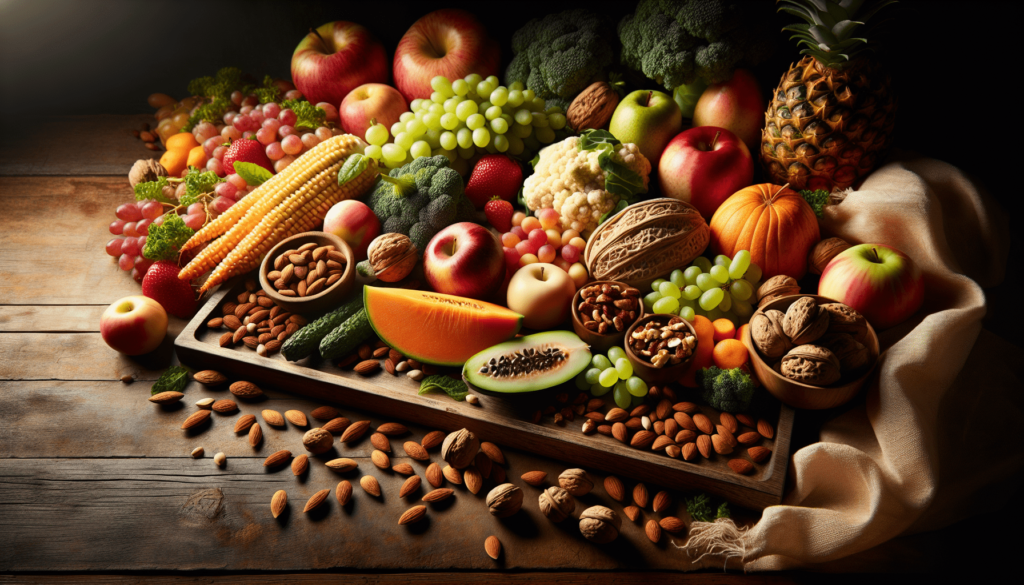Have you ever opened a bag of chips and thought, “I’ll just have a few,” only to realize you’ve entered a time warp where twenty minutes and the entire bag just disappear? Fear not, fellow snack enthusiast, for you are not alone. Throughout the annals of snack history, many have fallen victim to the delightful saltiness and crunch that beckons us into the snack abyss. But today, we’re here to discuss the art of snacking with the finesse of a trained ninja and the sophistication of a food critic who’s also a fan of elastic waistbands. Let’s embark on a munching journey that ensures both your taste buds and waistline can live happily ever after.
What Is Snacking, Really?
Snacking, a pastime as beloved as napping or sarcastic tweeting, has become an integral part of our daily routines. It reminds us that no matter how well you pretended to be grown-up by starting your day with an avocado toast, your inner child still deserves a treat now and then—or maybe, several times a day. But snacking isn’t just about filling the mini-hunger voids; it’s about making intentional choices that keep you from turning into a ravenous beast by dinner time.
The Science of Snacking
Snacking smartly can be a real lifesaver, aiding in keeping those hunger pangs at bay and possibly preventing you from gnawing your own arm off before the next meal. Studies suggest that munching on smaller portions throughout the day can help maintain your metabolism, stabilize blood sugar levels, and prevent you from reenacting a mini version of Godzilla the moment you sit down for dinner. However, it’s choosing the right kind of snack that makes all the difference between health nirvana and living each day like it’s a cheat day.
Why You Snack When You’re Not Hungry
Have you ever asked yourself, why you find yourself rummaging through the pantry like a squirrel on a caffeine high even when you’re not really hungry? Surprisingly, the answer is not because your couch is located in the Bermuda Triangle of self-control. It turns out, snacking is often influenced by several whimsical, complex factors that deserve a spot in a family sitcom rather than a nutrition class.
Emotional Eating
Many people snack not out of hunger, but because of emotional triggers. Whether you’re celebrating, feeling bored, stressed, or witnessing your favorite TV character have an emotional meltdown (that might have nothing to do with your obsession with crying along with TV shows), your brain may trick you into believing that a snack can solve it all. The solution? Perhaps a hobby, a brisk walk, or something as inconspicuous as an adult coloring book might just save your potato chips from impending doom.
Convenience and Accessibility
Let’s admit, who hasn’t chosen the couch/TV snack combo because the kitchen was merely a room away? Our environment often dictates our snacking habits. If the easiest snack to reach is a giant candy bar, then rest assured, it will be the snack winning your undivided attention. The key is smart preparation. Keeping healthier options like fruits or nuts at arm’s length can challenge that stereotype of the modern couch potato.

The ABCs of Smart Snacking
Given that the universe cruelly refuses to make donuts a vegetable, we must arm ourselves with knowledge. The first step to cracking the healthy snacking code is by learning the ABCs: Antioxidants, Balance, and Creativity.
Antioxidants: Your Snack’s Hidden Superhero
Antioxidants, bless their little invisible molecules, combat free radicals, which are about as welcome as uninvited guests who leave their dishes in the sink. Among antioxidant-rich snacks are the ever-popular berries, dark chocolate (in moderation, folks), nuts, and green tea. When incorporated into snacks, they provide not only taste but also health rewards that are something to write home about.
Balance: A Little of This, A Little of That
Balance is crucial to eating like a sensible human adult. A good snack should blend carbs, healthy fats, and proteins, creating a trifecta that’ll keep you satiated longer and minimize the chance of a human snapping turtle impersonation before the next meal. Look to pairing Greek yogurt with fruits, whole-grain toast with almond butter, or dabbling in a bit of hummus with veggies.
Creativity: Jazz Up Your Snacking Routine
Snack time needs a little excitement now and then, without plunging headfirst into the realm of ironic hipster snacks like dehydrated kale. Before you resign yourself to the endless misery of tastelessness, know that you can get creative. Try making your own trail mix, experimenting with smoothie bowls, or crafting mini veggie pizzas with bell pepper slices as crusts.
The Nutrient Gems in Healthy Snacks
While visiting snack-land, do gain some provisions from the nutrient-rich treasures to be plucked and enjoyed.
The Protein Pinnacle
Let’s queue the protein-packed snacks that would work wonders whether you are a gym aficionado or a dedicated desk-bound worker. Think boiled eggs, Greek yogurt, cheese cubes, or tuna pouches. They are the bodybuilders of your snack world—fortifying and filling.
Carbohydrate Innovation
Mix working with complex carbohydrates. They are present in whole-grain products like oatmeal, popcorn without the butter flood, and whole-wheat crackers. Remember, carbs aren’t the bad guys if chosen with the caution of a detective outsmarting a cop show villain.
The Fabulously Fattening (in a Good Way)
Say ‘hi’ to healthy fats, which remind your waistline that not all fats are rude tenants in your dietary building. Snack offerings like avocados, nuts (in small, non-squirrel-sized doses), and seeds such as chia or flax, provide energy and release it over a longer period—preventing that inevitable mid-afternoon slump.

Debunking Snack Myths
Now, let’s politely kick those myths out of the snack park while occasionally pretending we’re detective sleuths discovering an age-old conspiracy.
Myth 1: All Snacks Are Junk Food
There’s more than meets the eye when it comes to snacks. Fresh vegetables, fruits, nuts, and seeds are some of the healthiest snacks you can eat, and they won’t look at you with a guilty face. Plus, they have the added benefit of not leaving orange dust all over your fingers.
Myth 2: Low-Fat Snacks Are Always Better
The ‘low-fat’ marketing tag is sometimes as deceptive as a magician pulling a rabbit out of a hat. What’s lost in fat might be gained in sugar or artificial ingredients. Look beyond the label and read the fine print because no one likes surprises that result in energy crashes or unexpected sugar frenzies.
Myth 3: Eating More Snacks Leads to Weight Gain
If you picture snack time as a calorie-thon, we need to talk. Smart snacking helps manage hunger levels and reduces the chances of overeating later. Remember: it’s not about the quantity as much as it is about the quality.
Planning and Prepping for Snack Success
Planning for snack success is like strategizing for battle, but with less armor and more Tupperware.
Snack Storage Solutions
Arm yourself with air-tight containers, mason jars, or cute bento boxes that could make a head of lettuce feel it’s checking into a five-star hotel. Storing your snacks properly helps in keeping them fresh and makes the idea of eating them a tad bit more exciting. Divide snacks into portion-controlled servings ahead of time to prevent ‘portion distortion.’
Snack Prep: Your New Favorite Afternoon Adventure
Snacking improperly is as dangerous as letting a toddler loose with a box of crayons. Hence, some prep is needed. Dedicate time once a week to prep healthy snacks in advance. This might involve slicing veggies, making energy balls, or portioning trail mix. Consider this as your culinary meditation, promoting zen and no surprise snaccidents.
Navigating Snack Options On the Go
The battle with unhealthy snack options is particularly fierce when your tummy demands satisfaction, but your environment gives options scarier than pre-endgame villains.
Snacking at Work
Workplaces often are snack traps conjuring visions of vending machine fare. There, surrounded by purposeless donuts and cringe-worthy cookies, one must have a strategy. Stock your drawer with small packs of nut butter, dried fruit, or health bars that delay hunger while appearing more professional than snacking on gummy bears mid-meeting.
Travel Snacking Tips
Travel—whether for holiday or productivity, presents its challenges, not least the airport snack wilderness. Before you buckle your seatbelt, consider packing snacks like granola bars, nuts, or whole-grain sandwiches. On planes, dried fruit provides a mess-free snack blending chewiness with the illusion of having your life together.
A Table of Tempting Yet Healthy Snack Ideas
The world of healthy snacks is broad, varied, and far from mundane. Here’s a buffet of options that neither insult your palate nor your pancreas:
| Snack Type | Option #1 | Option #2 | Option #3 |
|---|---|---|---|
| Sweet | Berries with Greek yogurt | Dark chocolate-covered nuts | Chia seed pudding |
| Salty | Mixed nuts | Whole-grain seaweed chips | Olives |
| Crunchy | Air-popped popcorn | Raw veggie sticks | Whole grain crackers |
| Creamy | Hummus with carrot sticks | Sliced apple with almond butter | Guacamole with celery sticks |
Knowing When to Call It Quits
Ironically, knowing when to stop snacking can be as important as knowing when to start. If you find yourself opening the fridge for the third time in an hour like some culinary Goldilocks, remind yourself that eating should be need-driven, not habit-driven. Listen to your body’s hunger signals and learn to differentiate between actual hunger and perennial boredom disguised as hunger.
The Art of Snack Timing
Timing, my friends, is your secret weapon in the snacking sphere. The ideal time for a snack is between meals when your energy flags, which typically means a mid-morning refreshment and a mid-afternoon refuel. Avoid mindless late-night snacks unless you choreographed a midnight dance workout with your cat.
Snack Smart, Not Hard
In this fast-paced world, perhaps biological rewiring isn’t about eating less, but eating right. Be a snack strategist where you munch mindfully, balancing taste with nutrition. So next time you find yourself eyeing the cookie jar, remember, it’s not about depriving yourself—it’s about eating intelligently and enjoying every bite along the way.
Of course, it helps if you trick your brain into believing that carrots and hummus are just as exciting as chocolate lava cake. Or perhaps invest in a healthy dose of culinary imagination—who knows, you might just invent kale chips 2.0 and become the next great snack visionary. All the while, laugh at your glorious snack missteps because, like those crumbs in your keyboard, they’re inevitable.
Snack smart, laugh often, and remember—it’s just food. Not a dramatic telenovela destined to consume your every waking thought. Now go forth, and may your nibbles be nutritious, your chips suitably reduced, and your popcorn shared with a friend.
